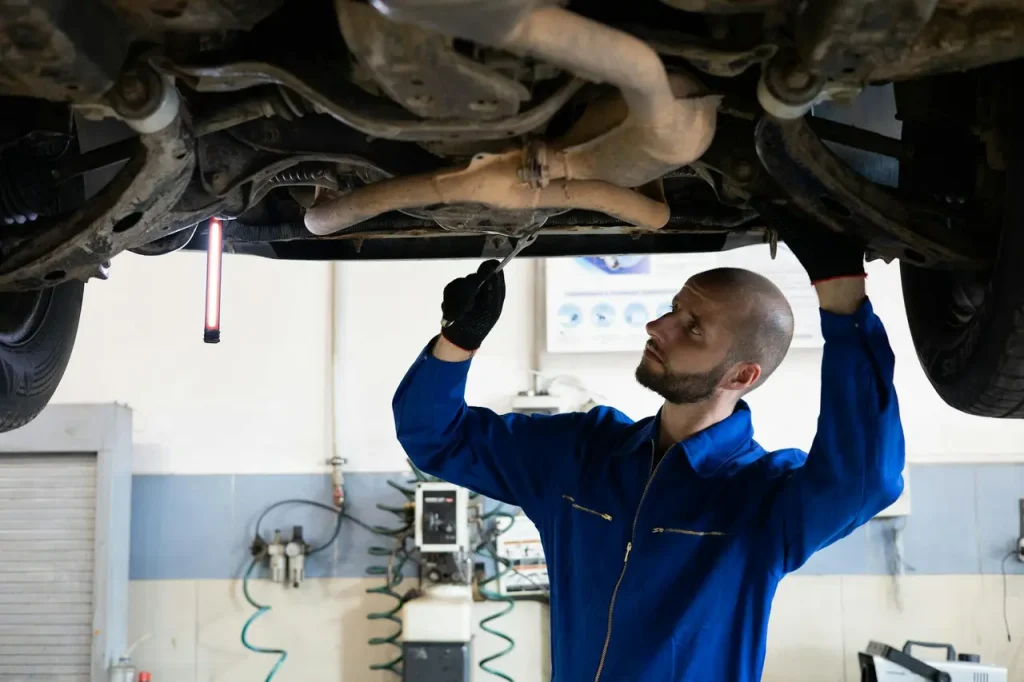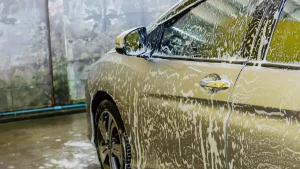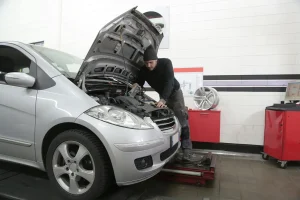
Essential Car Maintenance Tips for Longevity You Can’t Ignore
We’ve all been there. Staring at a smoking hood on the side of the road, or wincing at a new, terrifying noise coming from somewhere deep within the machine. I remember my first car, a rusty old hatchback named “Bertha,” whose engine gave up the ghost simply because I thought oil changes were optional. It was a painful, expensive lesson. That experience taught me that understanding some basic car maintenance tips for longevity isn’t just for mechanics; it’s for anyone who wants to avoid that sinking feeling and keep their vehicle running smoothly for years, not just months. It’s about freedom, reliability, and saving a whole lot of cash.
Unlocking Your Car’s Full Potential: The Importance of Longevity
Thinking about your car as a long-term partner rather than a temporary appliance is a major mental shift. But it’s the right one. A well-maintained vehicle is a happy vehicle, and a happy vehicle makes for a happy driver. The goal is to get ahead of problems before they become wallet-draining catastrophes. This proactive approach is the cornerstone of any good vehicle care strategy.
Understanding the Benefits of Proactive Maintenance
Proactive maintenance is a game-changer. It’s the difference between a minor, cheap fix today and a major, thousand-dollar repair tomorrow. By following a consistent schedule, you’re not just preserving your car; you’re investing in its future performance and your own peace of mind. These essential car care tips to make your vehicle last are all about preventing disaster. Simple checks and timely servicing can dramatically reduce the likelihood of unexpected breakdowns. It’s really that simple.
Common Misconceptions About Vehicle Lifespan
Some people believe cars are just built to fail after a certain number of miles. False. Modern vehicles are engineered to last well beyond the 100,000-mile mark, but they need your help to get there. The idea that a car is “old” at 80,000 miles is a relic of the past. With the right approach to maintenance, pushing your car to 200,000 miles and beyond is not just possible, it’s becoming the new standard for savvy owners.
Under the Hood: Engine and Fluid Essentials
The engine is the heart of your car. Everything else is secondary. If you neglect what’s under the hood, you’re just asking for trouble. Ignoring these core components is the fastest way to a dead vehicle. Let’s be brutally honest, this is where most people go wrong.
The Lifeline: Regular Oil Changes and Filter Replacements
Clean oil is everything. It lubricates, cleans, and cools the engine’s internal components. Over time, oil breaks down and collects dirt and sludge. Not changing it is like asking your own heart to pump sludge instead of blood. Ignoring this is the number one thing on the list of what maintenance prevents common car breakdowns. A fresh oil and filter change is one of the most vital steps for your car’s longevity. Don’t skip it. Ever.
Choosing the Right Oil for Your Engine Type
Conventional, synthetic blend, or full synthetic? It’s confusing, I get it. Your owner’s manual is your best friend here. It will specify the required oil weight (like 5W-30) and type. Sticking to the manufacturer’s engine oil type recommendations for long-term car health ensures your engine gets exactly what it was designed for. Using the wrong oil can lead to decreased performance and long-term damage. It’s a simple but critical detail.
Cooling System Health: Preventing Overheating and Damage
An engine that runs too hot is an engine that’s destroying itself. The cooling system, including the radiator, thermostat, and coolant, is responsible for keeping temperatures in check. A coolant flush every few years is essential to clear out rust and deposits that can cause blockages and lead to overheating. This is one of those routine car fluid checks for engine durability that pays for itself many times over.
Transmission Care: Smooth Shifts for Miles to Come
Your transmission is a complex and expensive piece of machinery. You want it to last. Transmission fluid, much like engine oil, degrades over time. There’s some debate over transmission flush vs fluid change longevity benefits, but the consensus is clear: fresh fluid is crucial. A simple fluid change is often less aggressive and safer for older vehicles, while a flush replaces nearly all the fluid. Check your manual, talk to a trusted mechanic, and don’t neglect this system. Proper care is one of the most important things you can do for your car’s long-term health.
Power Steering and Brake Fluid: Don’t Overlook These Critical Systems
These are what we call “forgotten fluids.” People check their oil but often ignore the power steering and brake fluid reservoirs. Brake fluid is hygroscopic, meaning it absorbs water over time, which can lead to a soft brake pedal and corroded lines. Power steering fluid keeps your turning smooth and effortless. Both should be checked periodically and changed according to your vehicle’s service schedule. It’s a small part of a larger plan for vehicle health.
Keeping Your Ride Smooth: Tire and Suspension Longevity
A car that rides poorly isn’t just uncomfortable; it’s a sign of underlying issues. The connection between your car and the road is handled by your tires and suspension, and they need attention too. Neglecting them is a mistake.
Maximizing Tire Life: Rotation, Alignment, and Pressure Checks
Tires are expensive. Getting the most out of them requires just a little bit of effort. The tire pressure monitoring system importance for lifespan can’t be overstated; properly inflated tires wear more evenly, improve fuel economy, and are safer. Rotate them every 5,000 to 7,000 miles to ensure they wear evenly. And if you notice your car pulling to one side? Get an alignment check. It’s a simple recipe for longer tire life.
Suspension Components: Absorbing Shocks for a Better Ride
Shocks, struts, and springs work hard to keep your ride smooth and controlled. Over time, they wear out. Do you know the signs your car needs suspension maintenance? A bouncy ride, excessive body roll in turns, or a nose-dive when braking are all classic symptoms. Replacing worn components restores ride quality and is a key part of long-term vehicle care.
Wheel Balancing: Preventing Uneven Wear and Vibrations
If you feel a vibration in your steering wheel at certain speeds, you might need your wheels balanced. Unbalanced wheels can cause uneven tire wear and put extra stress on suspension components. It’s an inexpensive procedure that makes a big difference. This simple step is one of the best ways to preserve your tires and suspension.
Stopping Power and Electrical Reliability: Critical Safety Aspects
It’s great if your car can go, but it’s absolutely critical that it can stop. The brake and electrical systems are non-negotiable safety items. There’s no room for compromise here.
Brake System Mastery: Pads, Rotors, and Fluid Checks
Listen to your car. A squealing or grinding noise when you brake is a cry for help. The brake pad replacement frequency for vehicle safety depends on your driving style, but they should be inspected regularly. Don’t wait until you hear metal on metal. That’s the sound of a simple brake job turning into a much more expensive rotor replacement. Keeping the brake fluid fresh is also crucial for reliable stopping power.
Battery Health: Ensuring Consistent Starts
A dead battery is one of the most common breakdown causes. Most batteries only last 3-5 years. Look for signs of corrosion on the terminals and have your battery tested, especially before winter. Following car battery testing and replacement tips for longevity can save you from being stranded at the worst possible moment. It’s a proactive step that provides huge peace of mind.
Electrical Systems: Lights, Fuses, and Sensors
Modern cars are packed with electronics. Regularly walk around your vehicle to check that all lights are working. A blown fuse can disable a key component. And that dreaded “Check Engine” light? Don’t ignore it. It’s part of understanding car warning lights for preventative action. A simple sensor issue could lead to bigger problems if left unchecked.
The Devil’s in the Details: Regular Checks for Extended Vehicle Life
Sometimes it’s the little things. The small components that seem insignificant can cause a cascade of failures if they’re ignored. A thorough, hands-on inspection now and then is one of the best forms of DIY car maintenance for maximum automotive longevity.
Belts and Hoses: Identifying Wear and Tear
Rubber belts and hoses degrade over time. A snapped serpentine belt can cause you to lose your power steering and alternator instantly. A burst coolant hose can lead to rapid overheating. Knowing how often should car belts and hoses be checked (a visual inspection every few months is a good start) can help you spot cracks, fraying, or soft spots before they fail.
Exhaust System: Spotting Leaks and Rust
A loud, rumbling exhaust is more than just obnoxious; it can be a sign of a leak. An exhaust leak can allow dangerous carbon monoxide to enter the cabin. Visually inspect the system for excessive rust or holes, especially in areas with harsh winters. A healthy exhaust is important for performance and safety.
Air Filters: Breathing Easy for Better Performance
Your engine needs to breathe clean air just like you do. A clogged engine air filter can choke your engine, reducing horsepower and hurting fuel economy. The air filter replacement benefits for fuel economy and longevity are well-documented. It’s one of the easiest and cheapest things to replace yourself. A clean cabin air filter also improves the air quality inside your car.
Windshield Wipers and Lighting: Clear Vision, Safe Driving
This seems obvious, but it’s so often overlooked. Worn wipers that streak and smear are a safety hazard in the rain. Performing simple windshield wiper blade maintenance for clear vision is critical. Similarly, foggy, yellowed headlights reduce your visibility at night. Thankfully, headlight restoration for improved nighttime visibility can make a huge difference, making driving after dark much safer.
Beyond Mechanics: Protecting Your Car’s Appearance and Interior
Longevity isn’t just about the mechanical bits. Keeping the body and interior in great shape preserves value and makes your car a much nicer place to be. These tips focus on aesthetics and preservation to maintain your car’s value.
Exterior Care: Washing, Waxing, and Paint Protection
Washing your car regularly removes dirt, bird droppings, and road salt that can eat away at your paint. Applying a coat of wax a few times a year provides a protective barrier against the elements. For ultimate protection, consider expert car detailing services for paint protection like ceramic coatings. A good finish isn’t just about looks; it’s about protecting the metal underneath.
Interior Preservation: Keeping Your Cabin Pristine
Your car’s interior takes a lot of abuse. Regular vacuuming and wiping down surfaces prevents dirt from becoming ground-in. Proper interior upholstery cleaning for long-lasting cabin health can prevent fabrics from fading and leather from cracking. It maintains the resale value and makes every drive more pleasant.
Rust Prevention: A Long-Term Battle
Rust is the enemy. Once it starts, it’s hard to stop. This is especially true in climates where road salt is used. Washing your car’s undercarriage regularly during winter is vital. Investing in rust prevention treatments for car body longevity, like an annual undercoating service, can add years to the life of your vehicle’s frame and body panels.
The Payoff: Why Investing in Car Longevity Makes Sense
All this effort might seem like a lot, but the return on investment is massive. You’re not just spending money; you’re saving it.
Saving Money in the Long Run
Preventative maintenance is always cheaper than emergency repairs. Always. Following these cost-effective ways to prolong car life means fewer tow trucks, fewer surprise bills, and no need for a new car payment anytime soon. This is the financial core of why these practices are so important.
Enhancing Resale Value
A car with a thick stack of service records is worth significantly more than one with a questionable history. When it comes time to sell, a well-maintained vehicle commands a higher price and sells faster. Your diligence directly translates to more money in your pocket.
Enjoying a Reliable and Safe Ride
Ultimately, the greatest benefit is confidence. The confidence to take a long road trip without worry. The peace of mind that comes from knowing your car is safe and reliable for you and your family. That’s the real payoff of a good preventative car maintenance checklist for longevity.
Your Roadmap to a Long-Lasting Vehicle
There you have it. This isn’t just a list of suggestions; it’s a roadmap. Following a consistent maintenance schedule and incorporating these habits into your routine will transform your relationship with your car. You can be the owner who understands how to make a car last well beyond 200k miles, enjoying a dependable ride while others are constantly cycling through new vehicles. It just takes a little knowledge and a little effort.







